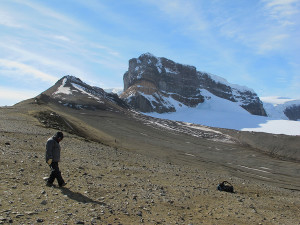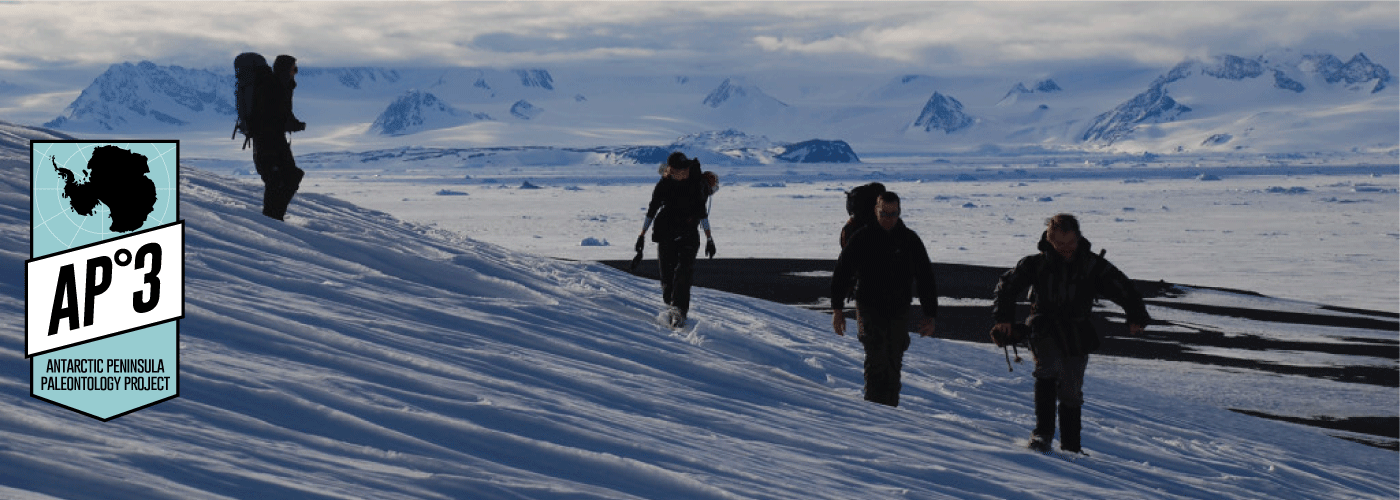
Eric Roberts hikes across Sandwich Bluff on Vega Island during the 2011 expedition. Photo by Joe Sertich.
During the 2011 field season, AP3 geologist Eric Roberts collected data for a new study of the stratigraphy, sedimentology, taphonomy, and paleoecology of the uppermost Cretaceous Snow Hill Island and López de Bertodano formations of the Cape Lamb and Sandwich Bluff regions of western Vega Island. He placed particular emphasis on the Sandwich Bluff Member of the López de Bertodano Formation, a rock unit that has produced several of the most important Cretaceous bird fossils from Antarctica. Over the course of this research, Eric discovered what may be a continuous rock section through the Cretaceous–Paleogene (K–Pg) boundary – the time interval that encompasses the end of the Mesozoic Era (the Age of Dinosaurs) and the beginning of the Cenozoic Era (the Age of Mammals). If verified through further study, this possible K–Pg boundary section would constitute the first from Vega Island and one of the very few to be recognized from the entire Antarctic continent. Continued analysis of this sequence could therefore yield new insights into the effects of the K–Pg mass extinction in the southern high latitudes. The paper describing the results of this study, authored by Eric in collaboration with many other AP3 members, was published in 2014 in the scientific journal Palaeogeography, Palaeoecology, Palaeoclimatology.
